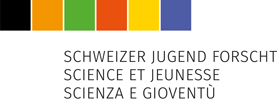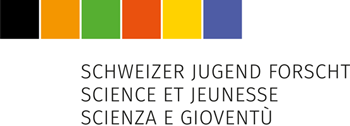Gestaltung | Architektur | Künste
Heidi Hertach, 2000 | Luzern, LU
The aim of this project is to animate Lydia Davis’s story “The Dog Hair” on two narrative levels. The practical result is accompanied by a theoretical paper, which examines how and why stories are animated using such multi-layered plot structures. The discussed films show varying approaches. They rely on visuals, audio or context to communicate a change in place, time or reality. The analysis also reveals different motives as to why each story is told in its given structure.
Fragestellung
This thesis is concerned with the depiction, structure and function of narrative levels in animation. The overarching question is: ‘How can a frame narrative be built around the text “The Dog Hair” and be animated in a compelling way?’ An analysis of existing animated films was conducted, examining the following questions: How many narrative levels are there? How are they distinguished? What purpose do they serve in the story?
Methodik
Four examples of animated films with storytelling or memory as an important theme were selected, taking into account style and genre: “Only Yesterday” (Takahata, 1991), “Waltz with Bashir” (Folman, 2008), “Persepolis” (Satrapi/ Parronaud, 2007) and “Analysis Paralysis” (Melece, 2016). The sequences between each change in narrative level were categorised into first-, second- or third-degree narratives, which enabled concise descriptions. The films were analysed with regard to the aforementioned points. I began the creative process by drawing different frame narratives and characters in my sketchbook. Further development was done on a Wacom tablet. I experimented with transitions from the first- to the second-degree narrative in Adobe Animate. Sequences that worked well were combined with sketches of the frame narrative, the timing adjusted, and narration added to form the animatic. Pictures and videos of myself served as reference for movement and perspective.
Ergebnisse
The analysis reveals varying techniques that are employed to distinguish the subordinate levels from their respective frame narrative. In “Only Yesterday” and “Analysis Paralysis”, the directors rely on visuals, i.e. changes in style and colour. In “Waltz with Bashir” and “Persepolis”, sound effects and speech are used to indicate the time and location of the action. The analysis also shows links between the structure and content of each film. In “Only Yesterday” and “Persepolis”, the subordinate level becomes a means to relate childhood to adult life. In “Waltz with Bashir”, the technique emphasises the dismemberment war brings. Out of fragmentary episodes, viewers and character jointly piece together the forgotten memories. In “Analysis Paralysis”, the structure is used to provide information to the audience. The characters interact across the narrative levels, giving the short a playful spin. The practical work resulted in a three-minute 2D animation with two narrative levels. The original text, a written monologue, is spoken by protagonist Erin. She remembers her deceased dog and lets the viewer in on her fantastical hopes and memories. This happens on a subordinate narrative level, while the setting, invented by myself, forms a frame narrative around it. The animation draws on the visual language of “Persepolis”. The transitions are informed by the fluidity seen in “Waltz with Bashir”, while the playfulness seen in “Analysis Paralysis” inspired my own playful approach.
Diskussion
The technical execution of “The Dog Hair” isn’t perfect. Scenes like the growing cloud of hair that forms the dog at the end could be improved through more refined animation. This would be material for another thesis looking into a separate aspect of filmmaking. The focus of this project was the animation’s narrative structure, which was thoroughly explored in theory and practice. Thus, the goal set out in the thesis was well met.
Schlussfolgerungen
Completing the analysis broadened my understanding of techniques used to create a visually and structurally interesting animations. The use of two narrative levels creates a synergetic effect between the image and soundtrack, resulting in a compelling and poetic film. Additionally, the analysis showed that the interface between reality and imagination is a subject that often occurs in animation and is well suited to the medium. In each image, details are left out, colours exaggerated, shapes simplified or important elements accentuated. This makes animation an ideal medium to portray loosely defined situations like dreams, fantasies or memories.
Würdigung durch den Experten
Jonathan Wüst
Heidi Hertach gibt sich selbst die nötigen Hilfsmittel in die Hand, die sie zur analytischen Dekonstruktion von vier Filmen benötigt und die sie auf dieser Grundlage zur kreativen Konstruktion ihres eigenen Filmes anwendet. Sowohl die erkenntnisreichen Analysen als auch die einfallsreichen Filmbilder bestätigen das stabile Fundament und die Vielseitigkeit ihrer Methoden. Ihre Arbeit zeigt zudem auf ungezwungene Weise, wie theoretische Erkenntnisse der Praxis und praktische Erfahrungen der Theorie hilfreich unter die Arme greifen können.
Prädikat:
hervorragend
Kantonsschule Alpenquai Luzern
Lehrerin: Gabriela Gyr



